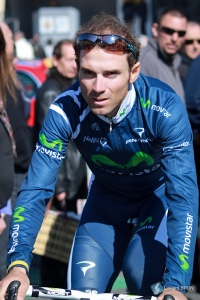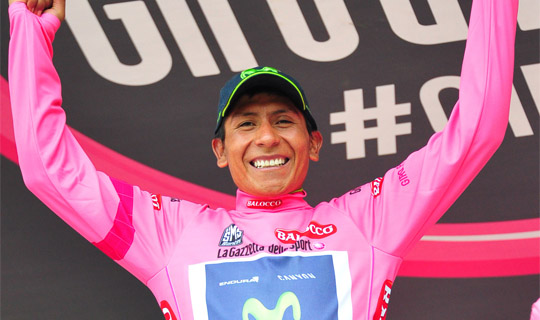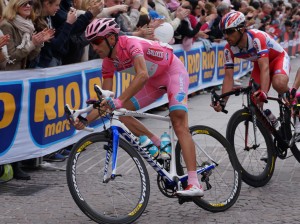This is my first post since Roubaix way back in the spring. Since then I have changed jobs and i’m back working full time for the first time since I started the blog in 2013. Back then I spent the entire season watching any cycling I could ‘live’. I posted after every stage of the 2013 Giro whereas this year I didn’t do a single post about it. There have been a number of reasons for this; mostly a lack of time. I do think that you miss something following a race after the event. While many stages ‘caught’ live can be a complete bore there’s often a little thing that not everyone notices that underscores how the stage and / or race is won. There have been some changes to the schedule this year, both in terms of the calendar and the TV coverage that haven’t always been for the better. The Tour or Turkey was pretty much highlights only this year and that was a race that I enjoyed watching live. Then there’s the Tour of Poland that someone has decided would gain so much more from being scheduled to take place during the Tour de France!
Watching this years Tour I often found myself thinking that I ought to write about some of the things taking place. Cav’s yellow, GC teams invading the sprints, Froome’s panache, Sky NOT getting trolled for doping to mention just a few. I’ll get around to proof reading this review of the 2016 Tour but in the meantime…
Tour de France 2016
Signing off his review of the 2016 Tour de France and Chris Froome’s historic 3rd victory in the race David Millar said we should “..enjoy” Sky’s continuing dominance of the biggest race in cycling while it lasts. This sentiment seems to be widely held by most of the people on my social media timelines, but for this armchair pundit at least I think endure is more appropriate.

Don’t get me wrong; Sky have achieved a fourth maillot jaune in five years and that in itself is a fantastic achievement. But even if the Sky MO has evolved from the one dimensional approach employed to provide Bradley Wiggins his sole grand tour victory my heart sank when Froome assumed the race lead on stage on stage 8. Of course, only the most suspicious conspiracy theorist could suggest that Sky could have known in advance that Froome’s attack over the final climb on the stage would have resulted in him heading the GC for the remainder of the race.
Sky employed the same strategy during the Grand Depart and the early stages that had worked for them so well a year ago. A team made up of entirely of domestiques (no sprinting distractions here!) ensured that Froome was kept at the business end of the race even on sprint stages. A crash within the bunch on stage 1 led to some noises off from sprint patron (and ex Sky rider) Bernie Eisel among others criticising the GC teams for getting mixed up with the lead out trains long after the 3km cut off had been negotiated. I wonder if Mark Cavendish would have been quite so diplomatic about this particular strategy that Sky have led if he hadn’t been enjoying a renaissance and his first ever yellow jersey.
Froome was pretty much the highest place GC contender on anything that didn’t end up in a gallop before the stage into Luchon and his audacious wrong footing of his rivals over the Col de Peyresourde. Froome had departed the race when the Tour last visited the town in the Pyrenees in 2014. Chief rival that year Alberto Contador had crashed out too allowing his remaining Tinkoff teammates the opportunity to go for stage wins. Mick Rogers, in the break that day, waited until he was on the descent into town before attacking and then time trialling away for the stage win. Sky’s tactic was for Froome to attack the KOM on the penultimate climb. As the TV commentary speculated about Froome’s desire to take the polka dot jersey in addition to yellow he struck out before reaching the top of the Peyresourde and gained vital yards as Nairo Quintana fumbled with his bidon and looked around in vain for Alejandro Valverde.
If Sky can be accused of riding conservatively in defence of the GC the same can be levelled at the teams of the rival GC teams when it came to attacking. The relative form of the other pre-race favourites when the came under the spotlight can be debated further but the point at which Chris Froome won his third Tour came in those first few hundred metres of the descent into Luchon. There are many ironies in Froomes victory, not least of which is that he has shown spontaneity while his team have been anything but. It shouldn’t be discounted that there wasn’t a single stage where Froome had to go head to head with his rivals without riders like Wout Poels and Sergio Henao first administering a metaphorical beating to other teams domestiques. Despite this I don’t believe that Sky’s strength in depth was the deciding factor. One of the ex pros (I can’t remember who) invited onto ITV’s coverage of the final stage commented that we might have seen a different race if Alberto Contador hadn’t abandoned after struggling through the first week after a crash on stage 1. Maybe, maybe not. Contador’s luck was particularly bad, at least Richie Porte made the finish (and 5th overall) but he was rueing the loss of time due to a puncture in the final km’s on stage 2. Quintana, fell a long way short of pre-race expectations; a ‘virus’ was conjured up at one point to try to explain his inability to challenge Froome. Movistar’s much vaunted double team of Quintana and Valverde had no answer for Froome and Sky this time and other hopefuls were even further off the pace.
There had been speculation before the race that Astana could see a 21st century version of the rivalry between Bernard Hinault and Greg Lemond in the 1986 Tour with Vincenzo Nibali in the Badger role to Fabio Aru’s Lemond. I could use a couple of hundred words explaining how that worked out but rather than waste your time I’ll summarise; it didn’t happen. Nibali looked as if he would rather be anywhere else than the Tour and Aru was no more than a bit part player.
Yet another team supposedly offering a spicy inter team rivalry ahead of the race was BMC. Richie Porte was riding in support of Tejay Van Gardaren or joint leader depending on who you listened to or if it was a Friday or something. Porte was resigned to working for Tejay even though he was the much stronger rider until his ‘leader’ fell off the radar by which time the most the Porte could hope for was a podium place. If BMC have learnt anything from this years Tour it should be that Tejay Van Gardaren will never be a grand tour winner. Stage 2 puncture notwithstanding it would have been interesting to see if Porte could have challenged Froome if Tejay had been riding for him. One for 2017 perhaps.
Quintana ultimately did enough to get onto the podium, knocking Orica’s Adam Yates off the third step. Yates is not altogether a surprise package but his achievement suggests that there is a potential heir to Chris Froome outside of the Sky machine. Yate’s demotion may have robbed him of a podium place but he was still the winner of the young rider classification and can take some comfort that his time loss was a result of a mechanical rather than a loss of form in the final week.
If not many would have predicted two ‘home’ riders in the top 5 on GC, few people would have said that AG2R would have two riders on the Tour de France podium in three years. Romain Bardet delivered a French stage win and rode into second place on stage 19. Dave Brailsford has talked about the possibility of Sky delivering a French rider to victory in the Tour but as long as Froome is motivated to race the Tour Sky won’t be hiring a French GC rider and it’s hard to see a homegrown rider doing any better than what Bardet has achieved this year.
ASO recognise that the potential for a Sky dynasty along the lines of (whisper it) US Postal could prove detrimental for the Tour ‘brand’. The idea of 8 man teams was mooted today as a possible handicap to the Sky train (the team have finished this years race with the nine riders who started in Normandy three weeks ago). Others have talked about salary caps and a ‘draft’ for up and coming riding talent but it’s hard to see how such tinkering will upset the Sky juggernaut, at least where the Tour is concerned.
There’s another irony that this is the first year where Sky’s dominance of the GC at the Tour hasn’t been accompanied with accusations about doping. This, of itself, is a good thing although I am a little surprised given that Sky have made their opponents look so ordinary. The insights of the peloton have been notable in this respect; Mark Renshaw guesting on ITV today saying he studies Sky’s methods with great interest. Obviously, no one within the sport is going to speculate openly but the fans have shown much more respect to Froome’s result this year.
So the 2016 Tour wasn’t a classic as far as I am concerned; a British win isn’t enough of a justification. I have got this far without mentioning what for many was their defining moment of this years race. The incident involving Froome, Porte and Trek’s Bauke Mollema on the Ventoux stage could have played out very differently but actually mattered little to the overall outcome. I’m on board with Froome getting his finish time adjusted (and Richie too, although that was far less significant) as a result of his bike getting smashed by an oncoming moto. I thought that Mollema asked the key question however when he asked if he would have been given the same time as Froome if he had been the only one of the three impeded. When Dave Brailsford suggested that Sky waited patiently for a decision from the race jury I imagine the reverse was true. I can’t help thinking that it would have made for a more interesting race if the original post stage GC positions had been allowed to stand. The likelihood is that Froome would have re-taken yellow on the following day’s TT anyway but it would have shaken things up a bit, something the race needed in my view.
So much for the GC. Peter Sagan continues to entertain in the rainbow stripes and collected another points classification win. He vies with Froome as the rider you have to watch. If only some of the Sagz charisma could rub off onto Froome too. The KOM was dull viewing; it’s a classement that I normally enjoy following but Rafal Majka was more enigmatic as 2016 KOM than the entertaining rider who took the same jersey in 2014.
The sprints certainly didn’t turn out as expected. The key Mark Cavendish stat is that he wins far more Tour stages when he is in the same team as Bernie Eisel. It was the perfect start to the race that he finally got his maillot jaune after several attempts by the organisers to engineer the perfect opportunity. I think i’m right the expectations of a Cav resurgence were actually not that high and it’s been compelling to see the influence this has had on Marcel Kittel even after Cavendish had abandoned the race. It remains to be seen if he can cap everything with a gold medal in Rio in the next few weeks but Cavendish can be satisfied with his work so far in July, if not this year.
Cavendish has been reunited with Eisel and Renshaw at Dimension Data (nee MTN Qhubeka). He wasn’t the only one from the team to have an impact on this years race as Steve Cummings delivered another win to add to his victory in last year’s Tour. Cummings has developed a reputation as the breakaway rider of the peloton and this win added to the others gained in each of the stage races he’s entered this year.











